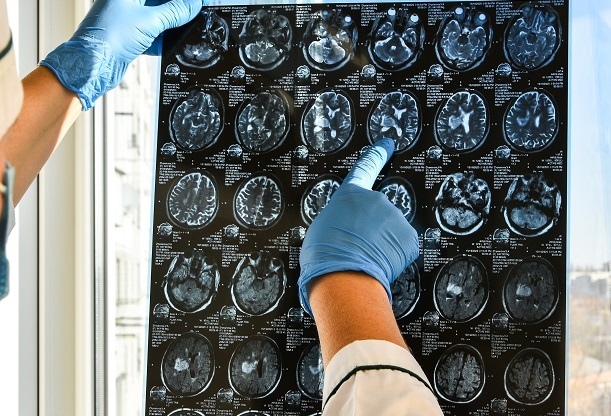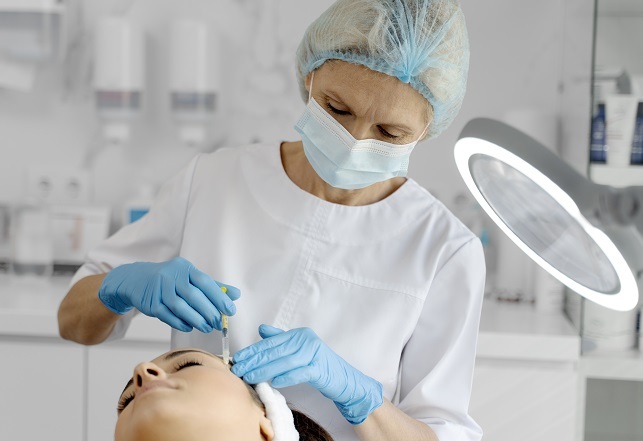
- Trending Categories
 Data Structure
Data Structure Networking
Networking RDBMS
RDBMS Operating System
Operating System Java
Java MS Excel
MS Excel iOS
iOS HTML
HTML CSS
CSS Android
Android Python
Python C Programming
C Programming C++
C++ C#
C# MongoDB
MongoDB MySQL
MySQL Javascript
Javascript PHP
PHPPhysics
Chemistry
Biology
Mathematics
English
Economics
Psychology
Social Studies
Fashion Studies
Legal Studies
- Selected Reading
- UPSC IAS Exams Notes
- Developer's Best Practices
- Questions and Answers
- Effective Resume Writing
- HR Interview Questions
- Computer Glossary
- Who is Who
What is the full form of ECT?
Introduction
Electroconvulsive therapy (ECT) makes use of mild electrical current that generates seizure and this treatment effectively treats some of the refractory mental health illnesses, including depression, schizophrenia, and many other types.

It is considered to be one of the modern methods that use anaesthesia to minimise the discomfort level faced by the diseased during the procedure.
Definition
Electroconvulsive therapy (ECT) is a procedure that is performed under general anaesthesia and small electric currents are passed through the brain with the intention to trigger a brief seizure. ECT causes major changes in brain chemistry that can quickly reverse back the symptoms of various mental health conditions.
Procedure of Electroconvulsive therapy
ECT involves multiple healthcare units that include a psychiatrist, anesthesiology specialist and other trained personnel related to this therapy.
Anesthesia and other preparations
ECT procedures begin with general anaesthesia, that puts the patient into a deep sleep and keeps them from the feeling of any severity of the pain, discomfort or anxiousness during the procedure. The personnels will also provide the patients with a muscle relaxant to avoid any injuries or strain that is likely possible during the seizures.
Electrode placement
A healthcare personnel normally places the electrodes that serve as the contact points for the electric current travelling, against the skin of one's head. The placement of the electrode is patient specific, and the medical team will choose a placement with the minimalistic side effects. There are three possible ways of placing the electrodes.
Right unilateral − In this placement both the electrodes are placed on the right side of the head one of the electrodes will be between the temple and the end of our eyebrow. The other electrode is placed near our head, just above the right ear.
Bifrontal − In this arrangement electrodes are placed on the opposite sides of our forehead, just the region above the end of our eyebrow.
Bitemporal − This placement involves one electrode aligned with the temple area on each side of your head.
The healthcare professional will coat the electrodes with a conductive gel that generally prevents any form of irritation and provides a burning sensation to our skin. Even if the electrical current is maintained at a low rate, skin irritation and burns are still possible.
Requirement of electricity
ECT involves a very small electrical current up to 0.4 amps. Normally a 9-volt alkaline battery can generate 0.6 amps of current for 1 hour before the battery is empty. The current is normally started at low levels and it is gradually increased until achieving the desired results. The electrical current duration for ECT is also very less for maximum of the treatments, the impact of the electrical current in our brain only lasts for a few seconds.
Induced seizure
ECT makes use of an electrical current to cause a seizure, which happens due to a sudden shock of electrical activity in our brain and causes the affected brain cells to fire rapidly. This causes electrical and chemical changes in the major functional region of our brain, leading to improvements in specialised areas of the brain.
The Seizures from ECT normally last between 30-90 seconds. If the seizure lasts more than this tenure longer, then the patient is provided with injectable medications to control the seizures.
Indications for ECT
ECT is the best treatment methodology for severe mental health conditions for all ages. This procedure mostly helps children and teenagers,as reportedly depression cases are more with this age group.
Following are the reasons for performing electroconvulsive therapy:-
Medications failing to work for any any mental therapy
A person experiencing an extreme shut down of function, called catatonia.
If a person is in danger to themselves or others, medications might take longer durations for overcoming the situation. This therapy can also treat the following disorders:-
Depression especially amongst women above the age of 60 years
Schizophrenia which is considered a severe mental disorder and the person is unable to remember their daily members as well.
Bipolar disorder or split personality disorder and other conditions that involve maniac symptoms.
Risks and side effects of ECT
Electroconvulsive therapy is safe but might have certain side effects and risk factors:-

Confusion − Post therapeutic treatment, one may experience confusion, which might last from few minutes to several hours and one might face a delusional situation lille self-recognition. Very rare confusion can last for several days or longer. This is generally more significant in older adults.
Memory loss − Some people have trouble remembering events that took place right before the treatment or in a week or months just before treatment or, rarely, from previous years. This condition is also known as retrograde amnesia where patients find difficulty in recollecting memories lasting a few days to months but for many patients they are able to recollect memories easily.
Physical side effects − While the ECT treatment procedure some individuals experience nausea, headache, jaw pain and muscle pain and all of them can be treated with proper medications.
Medical complexities − As this therapy involves usage of anaesthesia there are chances of high risks of medical complications. During ECT, heart rate and blood pressure might strike off high, and rarely that can lead to serious Cardiac problems.
FAQs
Q1. What is bipolar disorder?
Ans: Bipolar disorder is also known as manic depression, where extreme mood swings take place like emotional highs or hypomania and lows or depression. When one becomes depressed, the disease might feel sadness or hopelessness and lose interest or pleasure in performing daily activities. But in such cases the mood can be shifted to hypomania which is a feeling of euphoria, full of energy with weird irritation. These mood swings can have an impact on sleep, energy, activity, taking decisions, behaviour and the thinking clarity.
Q2. What are the major symptoms of Schizophrenia?
Ans: Schizophrenia is a severe mental disorder where people interpret reality in their illusional world. Schizophrenia results in some combination of hallucinations, delusions, and extreme disordered thinking that impairs daily functioning and behaviour of the person and makes the person disabled. Amongst the teenagers the predominant symptoms involve:-
Drop down in school performance
Trouble sleeping at night
Irritability or depressed mood.
Q3. Are there any side effects of Anesthesia?
Ans: An anesthesiologist normally administers the general anaesthesia prior to an operation and there might be some risks associated with the general anaesthesia procedure, but they are relatively safe if it is administered properly with the correct dose. It's a very rare situation where a patient experiences unintentional intraoperative awareness and the predominant side effects of general anaesthesia are dizziness and nausea.

